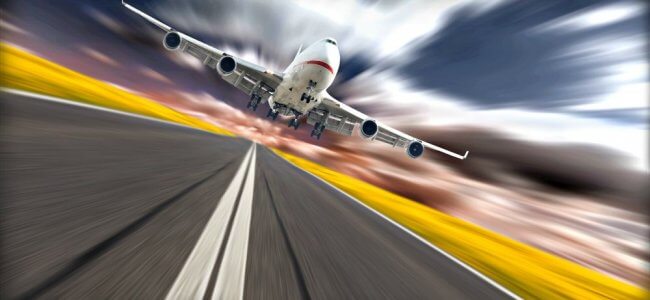“When everything seems to be going against you, remember that the airplane takes off against the wind, not with it.” - Henry Ford
If you have a superpower, what would it be? My answer is always “I want to fly”. Flying is the ultimate freedom because you get to move 360 degrees from every angle. Sadly, humans cannot fly … but there is an alternative invention called airplanes.
What makes it possible for airplanes to fly? How is flying a plane similar to running a business? Why is it beneficial for the plane to go against the wind and for your business to face challenges head on?
How Are Planes Able To Fly?
As we can observe in reality, an airplane needs a takeoff run to start flying. The takeoff run allows the plane to gain momentum. But it is also the slowest and most difficult part in the process of flying because you can feel the bumps, hear the loud engines, wheels moving and everything is dependent on the pilot.
From Explain That Stuff, an engine is not the main component that makes planes fly. The role of the engine is similar to the role of the pilot who controls the direction, when and how fast to move the plane forward. But what enables the plane to fly is when the force from the wind goes against the motion of the plane’s wings that initiates a “lift”.
Lift is the external force from the wind that creates resistance and air pressure, which the wings need to move upward. According to CN Traveler, pilots prefer to takeoff into a headwind for an added boost and acceleration it provides during takeoff.
Surprisingly, flying a plane is not a solo activity, but a team effort. For a safe flight, there are other factors that need consideration. Besides the pilot, there is also the dispatcher, flight attendants, and aircraft mechanics and technicians.
The purpose of the dispatcher is to guide the pilot to their destination. Dispatchers have to communicate clearly the current weather conditions, flight conditions such as the wind direction and speed, and alternate courses in case of emergency during flight. Thus, they share some operational control of flying the plane with the pilot.
Next are the flight attendants or cabin crew whose main purpose is to ensure the passengers are safe and comfortable. Last, but not least, are the aircraft mechanics and technicians. Every part of the plane’s engines need to be maintained and thoroughly tested before any flight. Why?
Because if there is one bolt loose, detrimental mistakes can happen and many lives are in danger. It is considered positive to be meticulous when it comes to maintenance of planes because this assures that air mechanics are mindful and care that the passengers reach their destination safely.
How Is Flying Like Running A Business?
In business, challenges create acceleration and motion. Think of yourself as both the pilot and dispatcher. You decide the direction, the timing and the speed of where to maneuver your business. The right direction is towards the oncoming wind that may seem troublesome at first, but is an opportunity in disguise.
Without trials (winds) in life, you will never grow. Every problem presented is an opportunity to learn from and gain experience. That experience creates an added boost to move your business and accelerate forward to level up.
Without change and some type of pressure, how would you know you are making progress? Sameness may be easier to deal with because you already know what is going to happen next. But how do you know you are moving forward and not backwards if there is no measurable difference in your situation?
If you are following the wind, how would you know you are affecting it instead of it controlling you? Would it not be simpler to use the force from the wind (challenge) and use it to grow personally and professionally?
How Is Flying Like Creating Websites?
Developing a website may not directly affect the life of the business owner, but the life you present to your audience online signifies who you are and why people should work with you. What are the necessary steps to ensure the safety and presence of your business online?
Identical to a dispatcher’s purpose, the first phase of creating a website is Discovery where both web designer and developer learn about you to understand how to match your story with the mood of your audience through User Experience (UX). From your story, the designer creates and guides the look and feel while the web developer gathers information about existing conditions to form a foundational structure to build your website.
During the creation phase, both web designer and developer become your flight attendants or project managers. We provide friendly customer service and constant feedback to reassure you the progress of your website every step of the way. When the website development is finished, the next step is testing before launching.
Similar to ensuring the passenger’s safety, web developers must setup all the security measures to make sure the host server is safe to use. This includes not only adding website security plugins / modules, but also properly checking the server configurations and schedule database and file backups in case of emergency.
As you can tell, the tasks of the pilot, dispatcher, flight attendants and mechanics are combined into three individuals: designer, developer and you. Attaining this smooth process is highly dependent on the starting point. The more details we learn from you during the Discovery Phase, the clearer it is for us to design, build and present a simple website that is easy to maintain and update no matter how complex it may be. Why?
“He who would learn to fly one day must first learn to stand and walk and run and climb and dance; one cannot fly into flying.” - Friedrich Nietzsche





